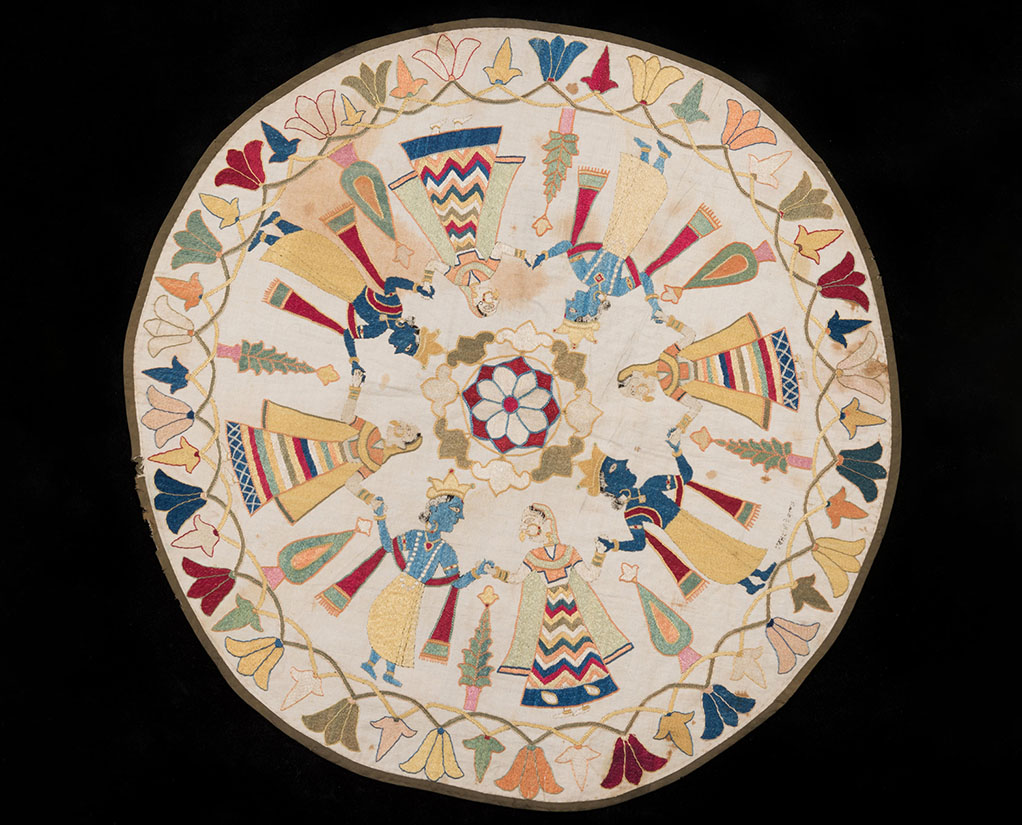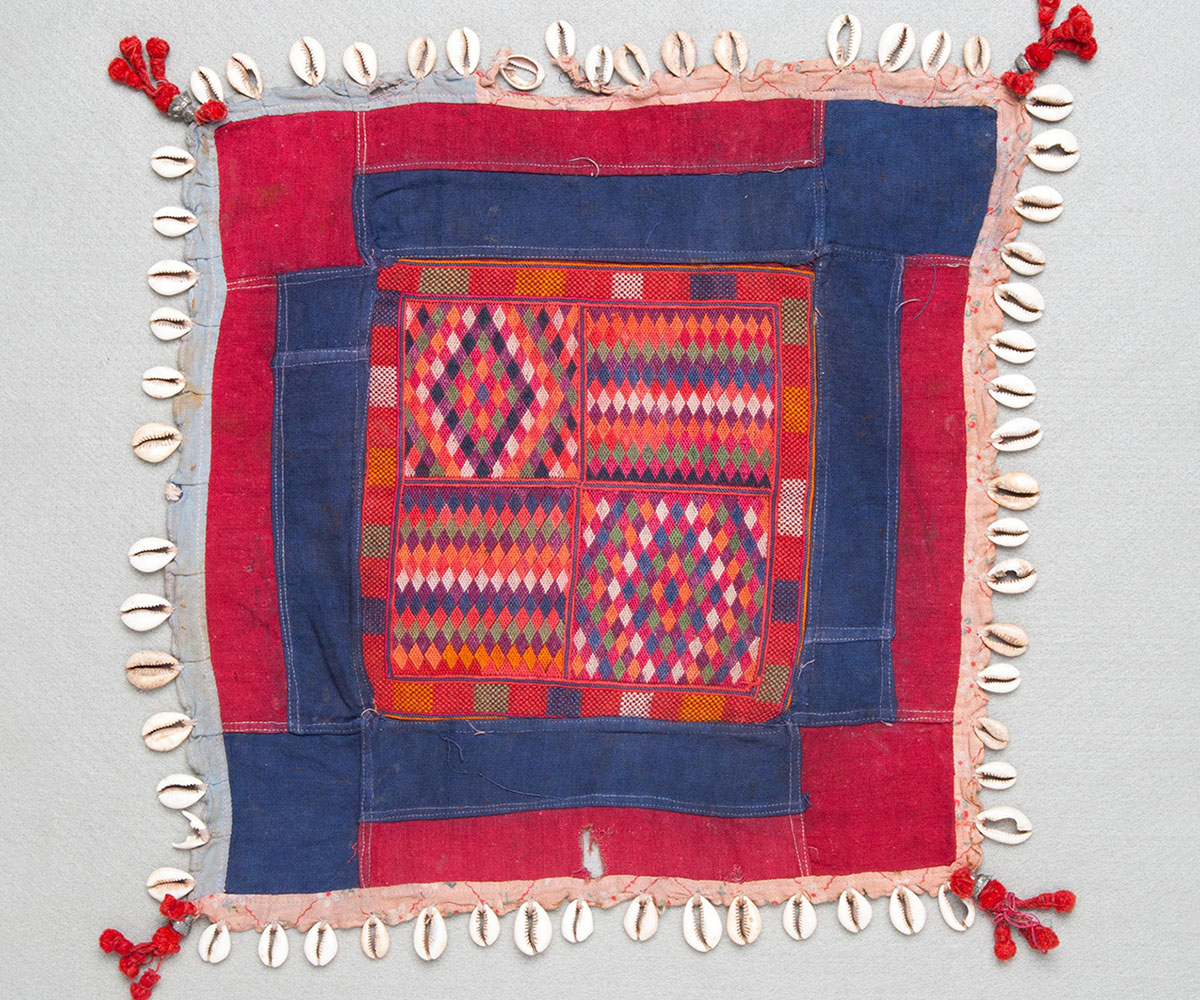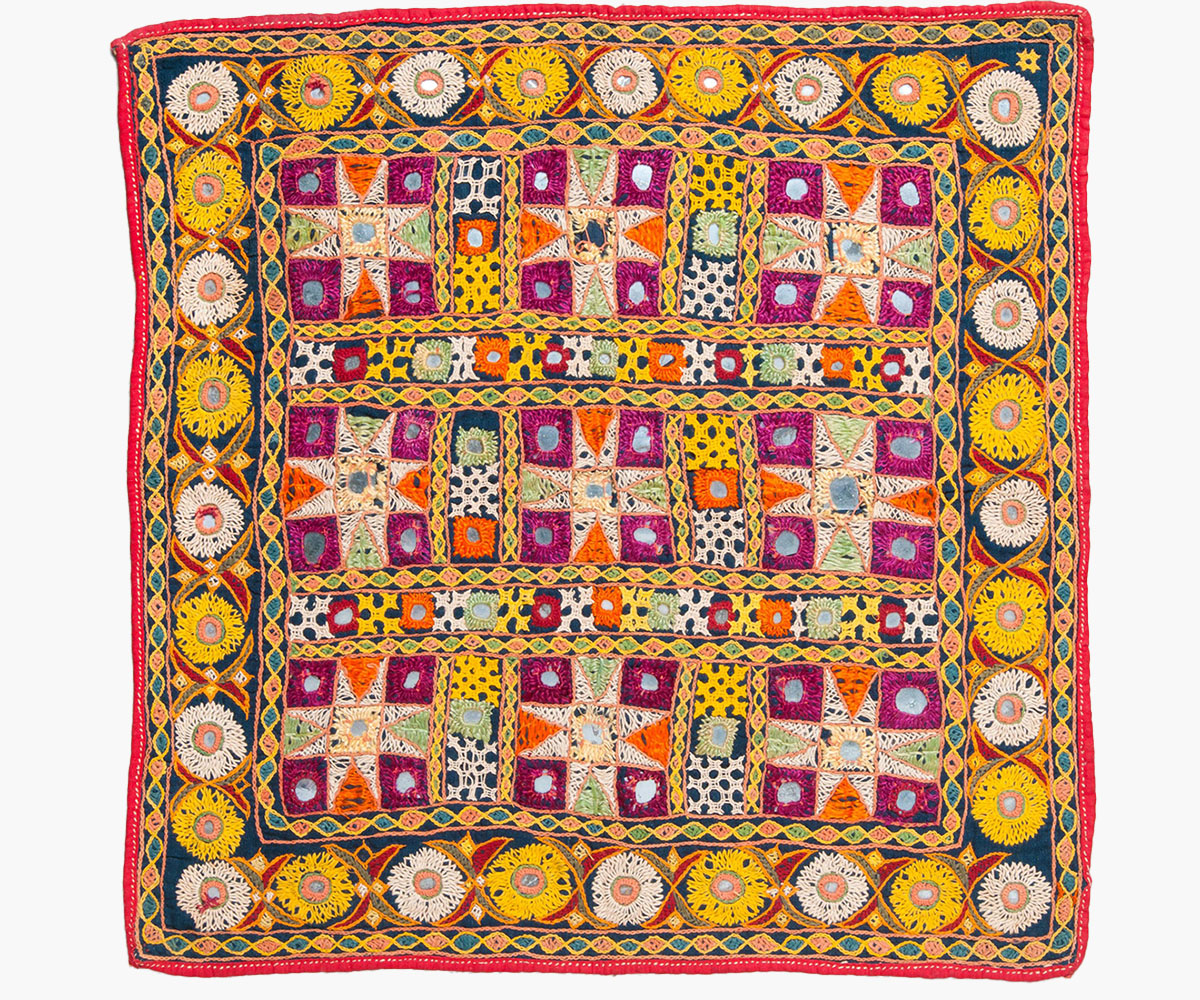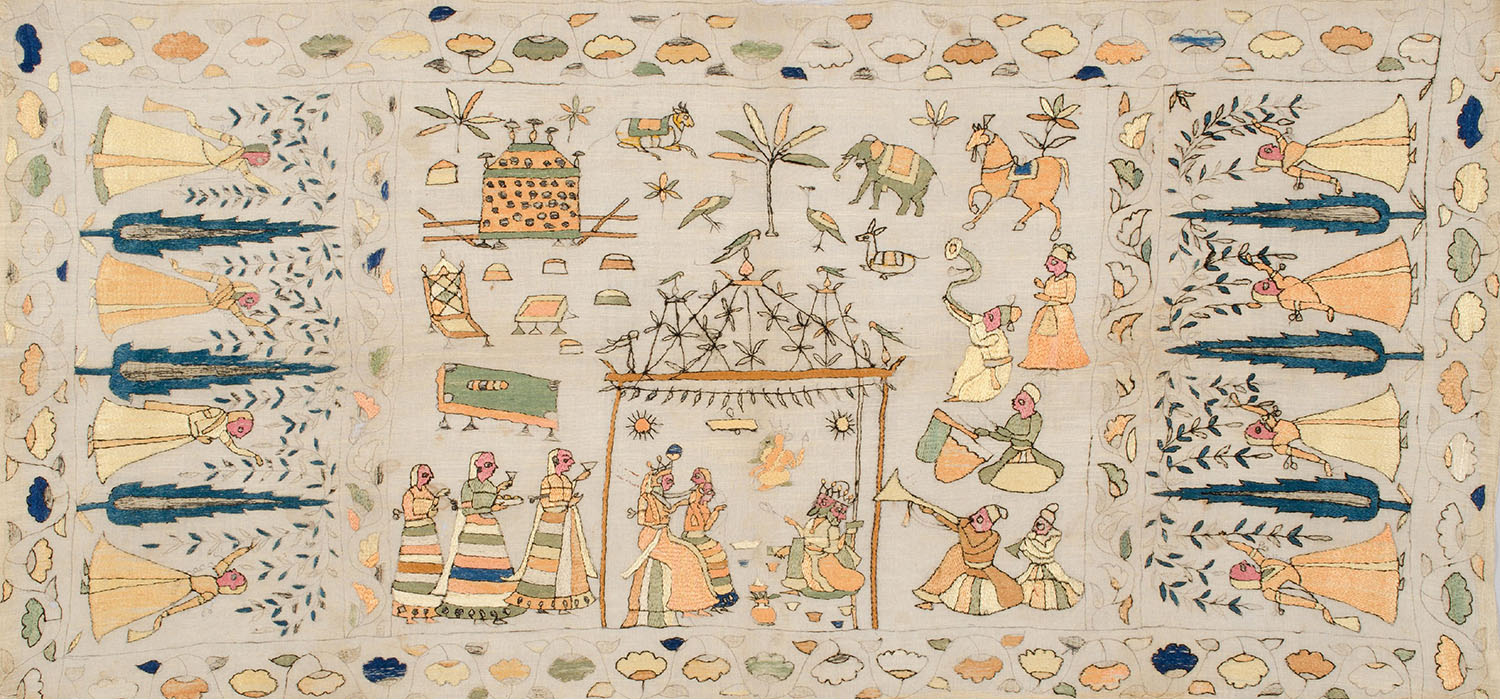ARTICLE
Rumal
Literally meaning handkerchief, the rumal is a square-shaped cloth garment used by both men and women that, depending on its dimensions, serves different functions. Derived from the Persian words ru and mal, the term literally means “something to wipe one’s face with.” Some popular specific regional variants of the rumal include the Chamba rumal and the telia rumal.
It is believed that square pieces of fabric of varying dimensions, known by the name rumal, were used in different parts of India throughout history. Initially a men’s garment, the rumal was popular among affluent members of the royal courts of medieval Rajasthan, where it was worn tied around the neck with a knot in the front, much like another garment known as the gul-band. In parts of southern Maharashtra, a headgear similar to but less ornate than the Rajasthani sapha is also known by the name rumal. In parts of Karnataka as well, the rumal is a kind of headgear or turban. In regions of Himachal Pradesh, highly embroidered rumals also known as Chamba rumals are used as covers for wedding gifts.
Within women’s fashion, a garment known as the rumal was a square shawl that could be wrapped around the shoulders or across the front of the body. These could have arrived in India from Iran or Egypt, where women would wear shawls in a similar manner. One such garment from Kashmir is the rumal shawl, which consisted of different pieces of kani shawls assembled together with seamless needlework.
Within religious contexts, the word rumal refers to the cloth that is used to cover one’s head before entering places of worship such as a gurdwara. Another kind of head cloth known as the Rumal-e-hajj, is worn by Muslim pilgrims and consists of a characteristic checkered pattern.
Bibliography
Our website is currently undergoing maintenance and re-design, due to which we have had to take down some of our bibliographies. While these will be re-published shortly, you can request references for specific articles by writing to hellomapacademy@map-india.org.










